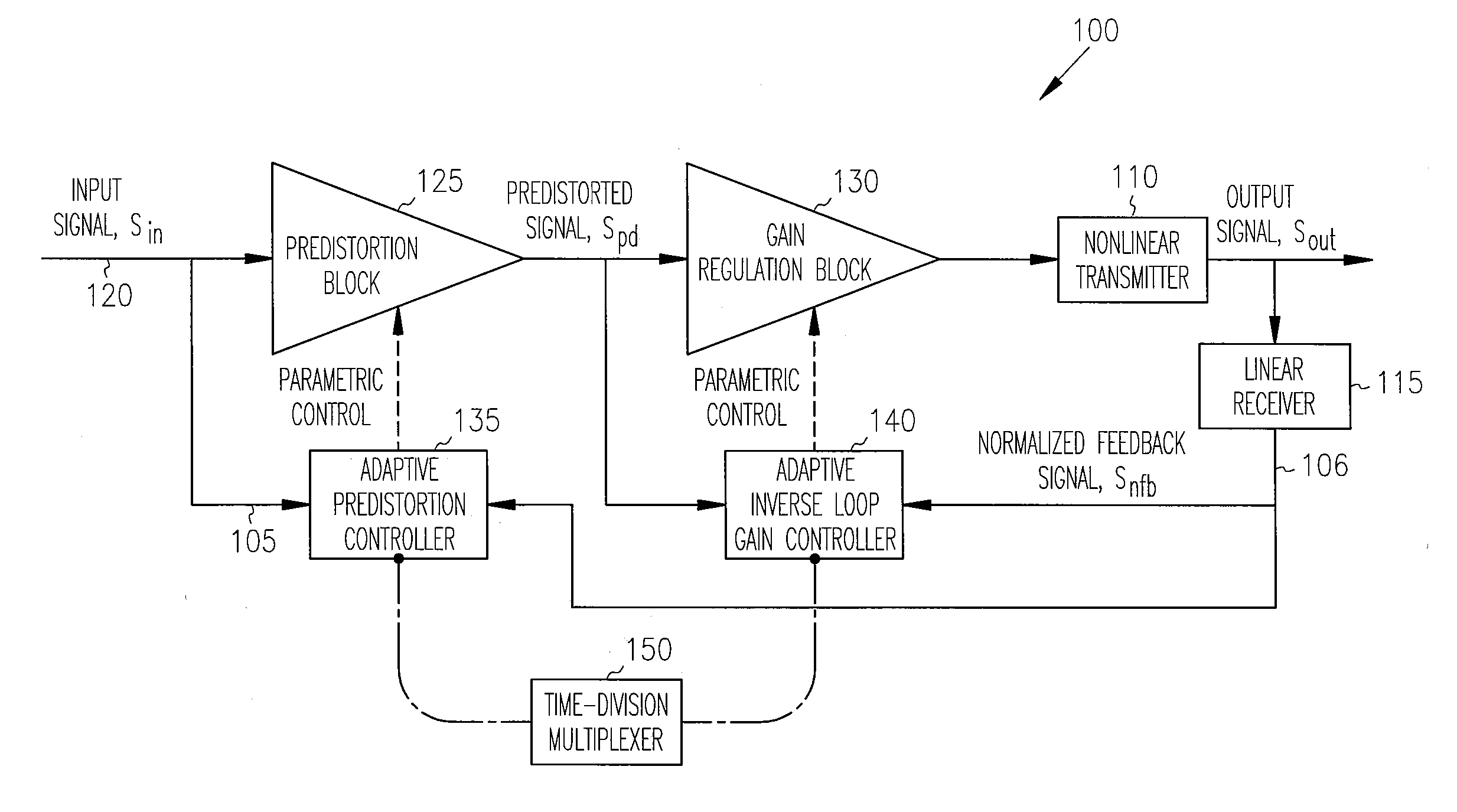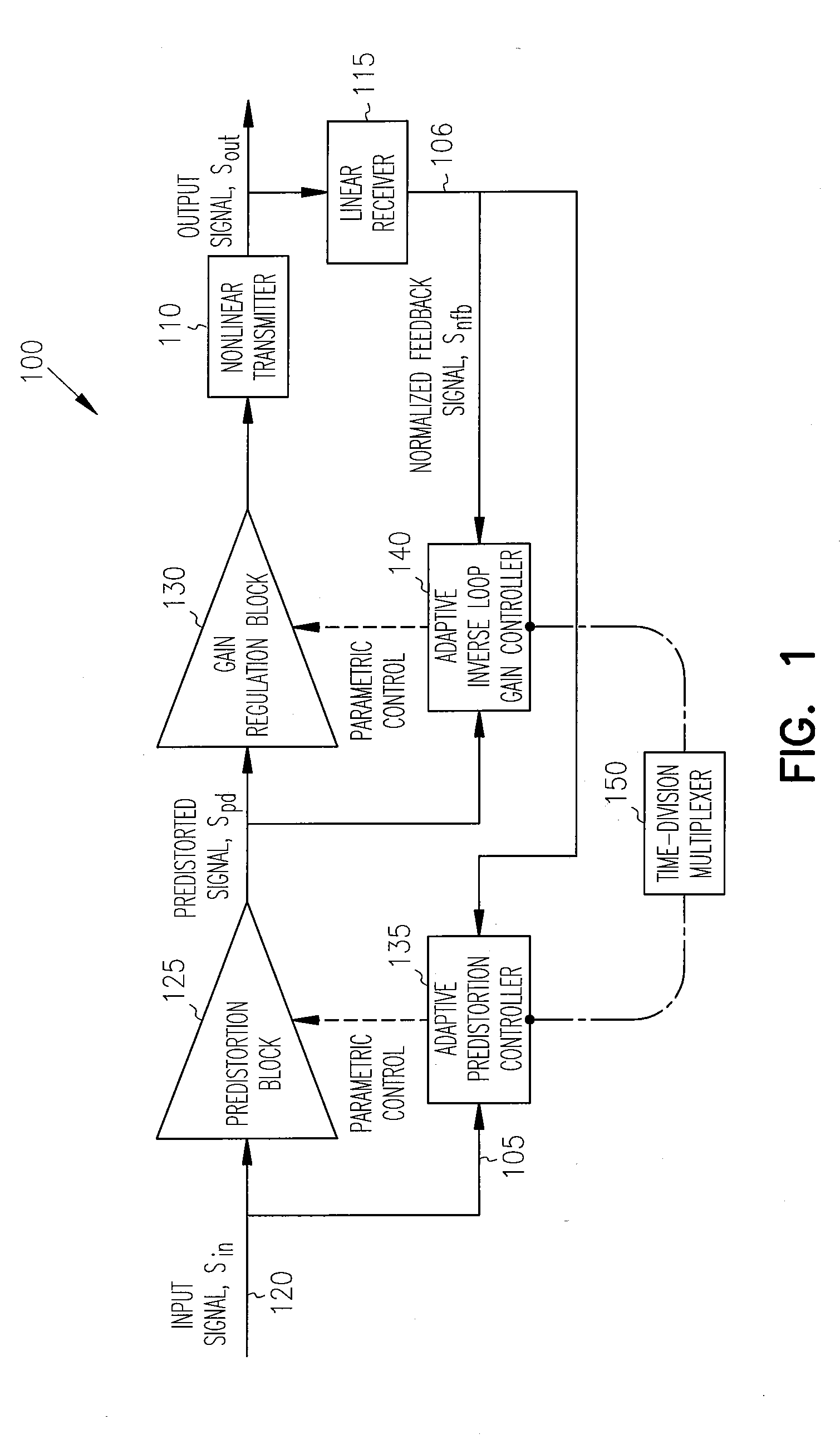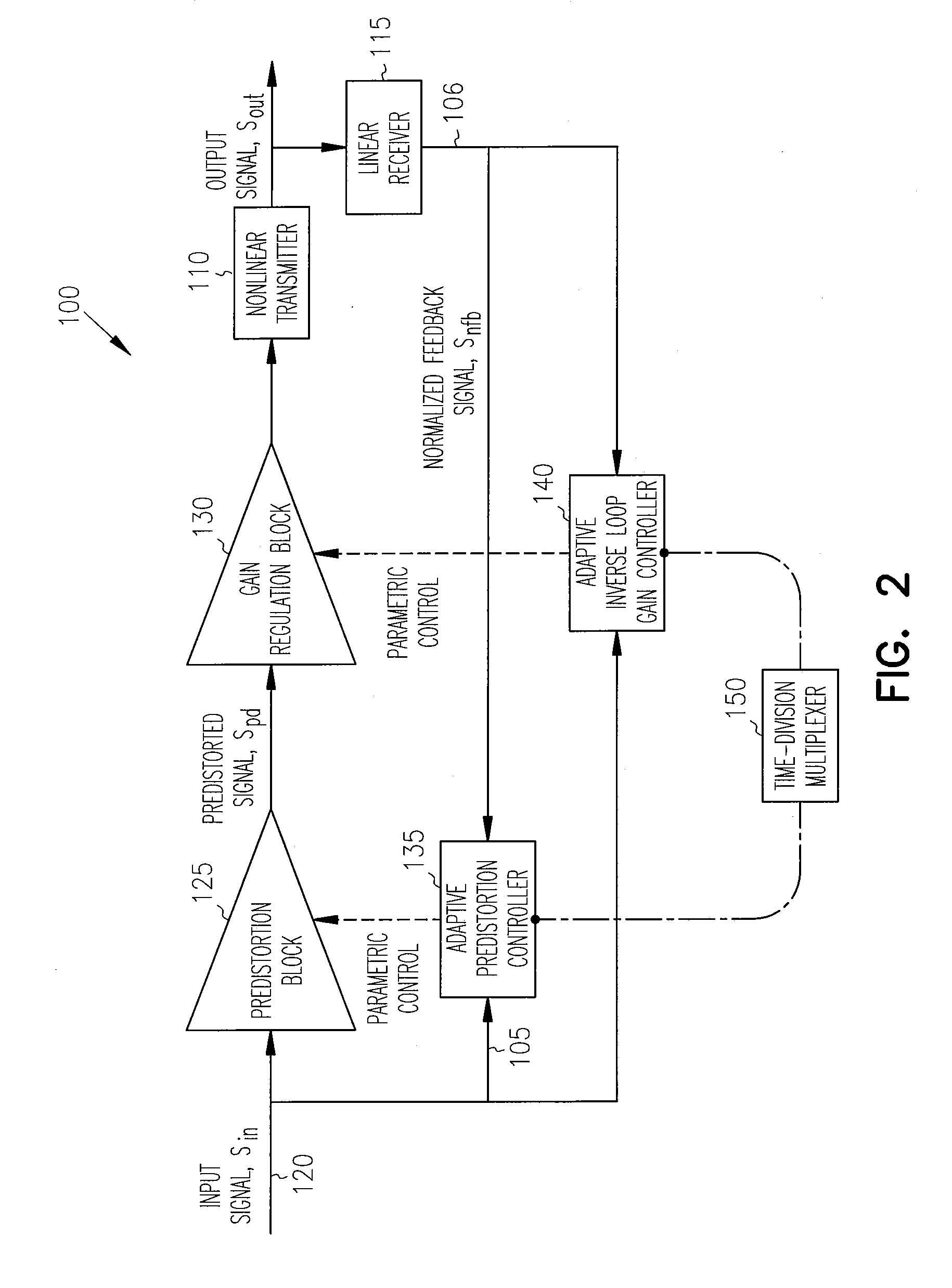Adaptive controller for linearization of transmitter with impairments
a linearization controller and transmitter technology, applied in the field of transmitters, can solve the problems of reducing the accuracy of gain estimation, the complexity of solutions requiring powerful offline processing capabilities, and the variation of signal magnitude, so as to reduce the sensitivity to system impairments and the susceptibility of minimal system impairments
- Summary
- Abstract
- Description
- Claims
- Application Information
AI Technical Summary
Benefits of technology
Problems solved by technology
Method used
Image
Examples
Embodiment Construction
[0031] In the following description, reference is made to the accompanying drawings that form a part hereof, and in which is shown by way of illustration specific embodiments in which the invention may be practiced. These embodiments are described in sufficient detail to enable those skilled in the art to practice the invention, and it is to be understood that other embodiments may be utilized and that structural, logical and electrical changes may be made without departing from the scope of the present invention. The following description is, therefore, not to be taken in a limited sense, and the scope of the present invention is defined by the appended claims.
Adaptive Linearization Controller with Reduced Sensitivity to System Impairments: Gain, Phase or Frequency Variation
[0032] An adaptive transmitter linearization loop 100 in FIG. 1 provides effective cancellation of gain, phase or frequency variations in adaptive loops for transmitter linearization, which are composed of two...
PUM
 Login to View More
Login to View More Abstract
Description
Claims
Application Information
 Login to View More
Login to View More - R&D
- Intellectual Property
- Life Sciences
- Materials
- Tech Scout
- Unparalleled Data Quality
- Higher Quality Content
- 60% Fewer Hallucinations
Browse by: Latest US Patents, China's latest patents, Technical Efficacy Thesaurus, Application Domain, Technology Topic, Popular Technical Reports.
© 2025 PatSnap. All rights reserved.Legal|Privacy policy|Modern Slavery Act Transparency Statement|Sitemap|About US| Contact US: help@patsnap.com



